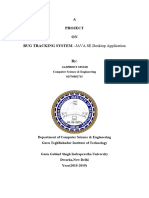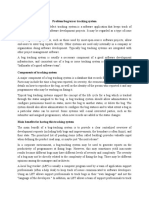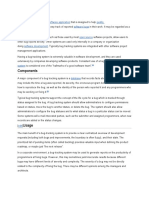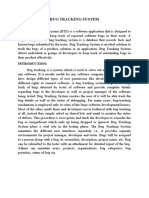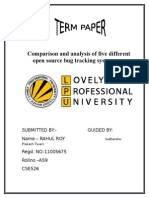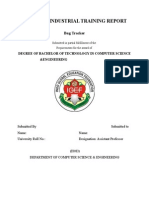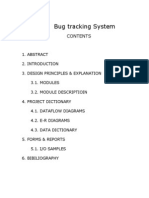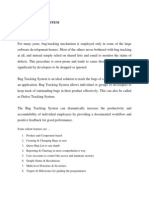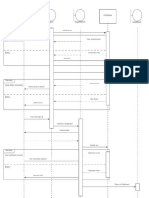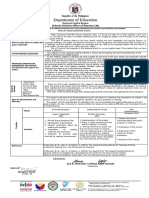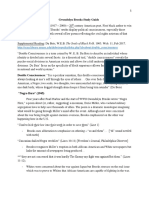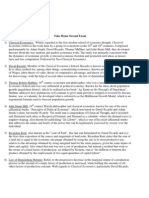0% found this document useful (0 votes)
68 views8 pagesBug Tracking System
The document discusses a bug tracking system which monitors software bugs reported in development projects. It describes key features of bug tracking systems like identifying and reporting bugs. It also discusses existing and proposed bug tracking systems and how they help improve software quality and development workflow.
Uploaded by
sahil guptaCopyright
© © All Rights Reserved
We take content rights seriously. If you suspect this is your content, claim it here.
Available Formats
Download as PDF, TXT or read online on Scribd
0% found this document useful (0 votes)
68 views8 pagesBug Tracking System
The document discusses a bug tracking system which monitors software bugs reported in development projects. It describes key features of bug tracking systems like identifying and reporting bugs. It also discusses existing and proposed bug tracking systems and how they help improve software quality and development workflow.
Uploaded by
sahil guptaCopyright
© © All Rights Reserved
We take content rights seriously. If you suspect this is your content, claim it here.
Available Formats
Download as PDF, TXT or read online on Scribd
/ 8
